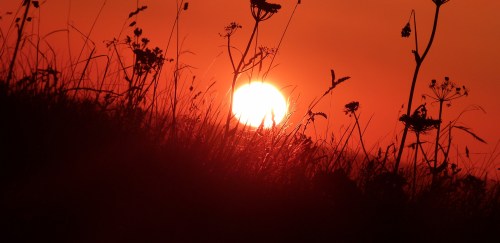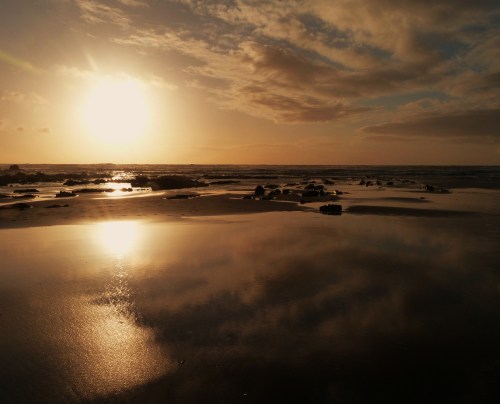What is a Risk Assessment?
A risk assessment is a systematic examination of a task, job or process that you carry out at work for the purpose of;
• Identifying the significant hazards that are present (a hazard is something that has the potential to cause someone harm or ill health)
• Deciding if what you have already done reduces the risk of someone being harmed to an acceptable level, and if not;
• Deciding what further control measures you must take to reduce the risk to an acceptable level.
Risk Assessments should also be carried out to satisfy the requirements of legislation but above all to ensure the Health & Safety of people.
Who should do risk assessments?
• Person experienced and competent to do so
• Competence can be expressed as a combination of knowledge, awareness, training, and experience.
• Consult a more experienced member of staff or external professional
• Remember competence does not mean you have to know everything about everything, competence also means knowing when you know enough or when you should call in further expert help.
When should risk assessments be done?
• A separate risk assessment should be carried out for all tasks or processes undertaken
• They should be carried out before the task starts
• Risk Assessments should also be reviewed on a regular basis, depending on risk, or if something changes.
HOW DO I COMPLETE A RISK ASSESSMENT?
Risk Assessment Methodology
1. Identify the hazards
2. Identify those at risk
3. Identify existing control measures
4. Evaluate the risk
5. Decide/Implement control measures
6. Record assessment
7. Monitor and review
8. Inform
Identify the hazards
• A hazard is a situation or a condition with the potential for harm!
• Find out what the significant hazards associated with the task or processes are.
• Identifying hazards; by observation, experience and talking to those who carry out the job Workforce
• Accident, ill health and near miss data
• Instruction Manuals
• Data sheets – COSHH
• Workplace inspections
Look for the hazards that you could
reasonably expect to result in significant
harm, for example;
Slipping and tripping hazards from poorly maintained floors, Fire hazards from flammable materials etc. 2. Identify those at risk Think about individuals or groups of people who may be affected
• Peers
• Staff
• Members of the public
Identify Existing Control Procedures
Examine how you already control the risks; it is unlikely so you must have some controls in place already.
To decide if those existing control procedures are adequate, and to evaluate the risk, complete a risk ranking
Evaluate the risk
• A risk is defined as the likelihood that a hazard will cause harm. How likely is it that the hazard may result in harm?
• Highly Unlikely
• Unlikely
• Possible
• Probable
• Certain
Decide and Implement new control measures Reduce either the probability of the accident happening or the severity of the outcome. When deciding new control measures, it is helpful to work through the ‘hierarchy’ of controls.
The hierarchy:
Elimination – get rid of the risk altogether
Substitution – exchange one risk for something less likely or severe
Physical Controls – eliminate contact with the hazard
Administrative controls – safe systems of work, rules to ensure safe use or with hazard
Information, instruction, training & supervision – warn people of hazard and tell/show/help them how to deal with it
Personal Protective Equipment – dress them appropriately to reduce severity of accident
Record the assessment
• Keep copies of the assessments for your records
Monitor and review
• Ensure that the control measures are achieving the correct level of control. Review the assessment on a regular basis or if anything changes e.g. new staff, change in technology or process.
Inform
• You have a legal duty to relay the findings of the assessment to everyone who maybe affected . Provide information to the workforce on any new control measure, any emergency procedures that have been developed
General
• Get a few people to check your risk assessment; other people may spot something that you have missed, also start a register of risk assessment so that you can find them quickly if needed.
Five Steps to Risk Assessments
- Identify the hazards
- Decide who might be harmed and how
- Evaluate the risks and decide on precaution
- Record your findings and implement them
- Review your assessment and update if necessary
………………………………………………………………………………………………………..
Freelance Photography Risk Assessments:
Health and safety advice for freelance photographers
It is recognised that the photographic industry is largely made up of organisations employing between one and four persons and the majority of these are self-employed. The 1974 Health and Safety at Work etc. Act places broad responsibilities on employers, employees and the self employed.
Responsibilities
- It is the duty of every employer, so far as is reasonably practicable, to ensure the health, safety and welfare at work of all his employees.
- For employees to take reasonable care for their own safety and that of others.
- For self employed people to conduct themselves in such a way that people not in their employ are not exposed to health and safety risks.
Locations
The following health and safety considerations should be taken into account before, during and after assignments. The following relate to assignments on location:
- the photographer should have current employer and public liability insurance, including cover for people engaged by him on an occasional basis. Remember, these certificates should be securely archived for forty years
- the photographer and his assistant should have motor vehicle insurance which covers their vehicles for business use
- the photographer should have a formal agreement with the customer outlining their requirements
- should carry out a visit to the location to discuss arrangements with the customer, requesting where necessary, permission for access and right to take photographs
- should carry out a risk assessment particular to the areas where the photographer may wish to take photographs
- should ensure that where necessary the location has adequate fire precautions and signage in place
- should consult with the customer, where necessary, of the location on any risk assessment they may have carried out and what actions were required and have these been effectively implemented
- should share with the photographic assistant any health and safety concerns and if necessary the location management
- should ensure that all equipment is maintained and safe to use, especially flash equipment
- should ensure that all employees including those self employed are trained to use equipment safely
- should take precautions to minimise any identified potential problems related to safety affecting the assignment and to any other people at the location.
Risk Assesments
Risk assessments are very important to identify any potential hazards that may be encountered either on the photographer’s premises or on location. There are several risk assessments the photographer should undertake in relation to his premises. These include:
- fire precautions
- using display screen equipment (DSE)
- manual handling
- control of substances hazardous to health (COSHH).
Fire precautions relate to having adequate types of fire extinguishers, which must be regularly serviced; displaying escape and emergency signage and ensuring escape routes are free from obstructions.
With the increased use of computers and digital equipment for manipulating images it is essential to consider the people who use display screen equipment (DSE) for long periods of time. It is very important to ensure that the computer, the workstation and the working environment meet current safety regulations, to lessen the possibility of wrist and eye strain.
Most photographers at sometime have to lift reasonably heavy and bulky equipment, such as flash lighting. A risk assessment will highlight the potential damage to the human torso, which may result in long-term absence from work. Manual handling training can help people to store equipment at correct heights and how to lift objects. Also, a risk assessment can indicate where mechanical aids such as trolleys can be of help.
With the advent of digital imaging in the industry, chemicals for processing and printing (wet processing) are not so widely used. There are however certain products used which are hazardous, for example, batteries and printer ink cartridges, along with industrial cleaning substances. These should all be listed as required by COSHH on a risk assessment.
Electrical safety is also very important. All electrical equipment such as flash equipment, kettles, microwaves etc. should be tested (usually referred to as portable appliance testing) at specified intervals. The electrical wiring installation of the photographer’s premises also requires testing at specified intervals. A competent person should carry out all testing and records of these tests must be kept.
Location safety mainly resolves around ‘trips, slips and hazards’. Each location should be assessed to ascertain hazards and where possible to control these to reduce any injury resulting from an incident, especially to any member of the public. Photographers, their employees and the self employed should work within the framework of the Health and Safety at Work Act, and where reasonably practicable, take steps to ensure the safety of themselves and others around them.
Camera National Occupational Standards
- Assess and agree studios or locations for shoot
- Specify camera equipment required
- Collect information and develop shooting ideas
- Co-ordinate the crew to position a camera
- Expose the image for portable single camera shoots with lights
- Supervise the tracking of the motion picture camera
- Position and move the camera to frame and compose the image
- Supervise the camera crew on a motion picture shoot
- Lighting for a single camera
- Set camera menus for multi-camera operation
- Set camera menus for portable single camera (PSC) operation
- Provide vision monitoring facilities for multi-camera television
- Lay simple track for camera dollies
- Rig camera and accessories onto a fixed mounting
- Rig camera and accessories onto a pressurized mounting
- Rig and manage cables for production
- Prepare and fit the lens and camera accessories
- Provide assistance to record and review video image
- Maintain camera batteries during shoot
- Provide assistance to the camera crew during multi-camera shoot
………………………………………………………..
I have carried out various risk assessments over the past few years working in various places. These assessments are put into place in order to protect ourselves as in employees as well as employers.
In my current project I work predominantly in a darkroom. We had a verbal risk assessment made by Luke from the equipment center in the college, he spoke through various potential hazards working in the darkroom and the importance of being aware of these hazards and what the what the procedure is if one of these hazards occurs. In the darkroom you are working directly with harmful chemicals. These chemicals are not to be ingested at any time. If chemicals get into the eye by any chance, there is a emergency solution located just outside of the darkroom. Protective eye wear is available on request.
Overall risk assessments are healthy and safety guides which are enforced to protect all the people involved, the photographer, assistants, models any other team involved.
…………………………………………………………..









